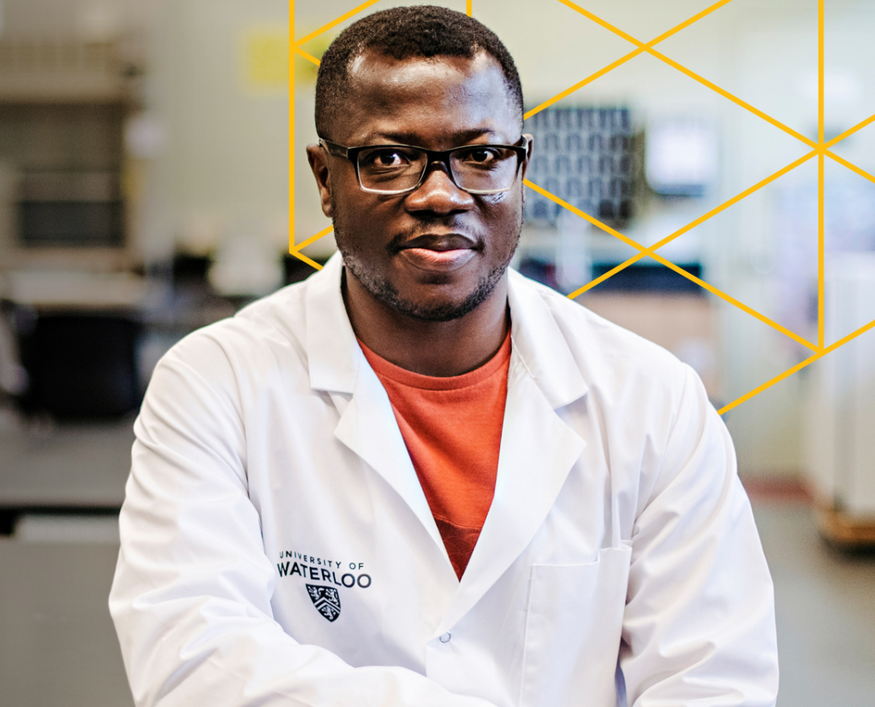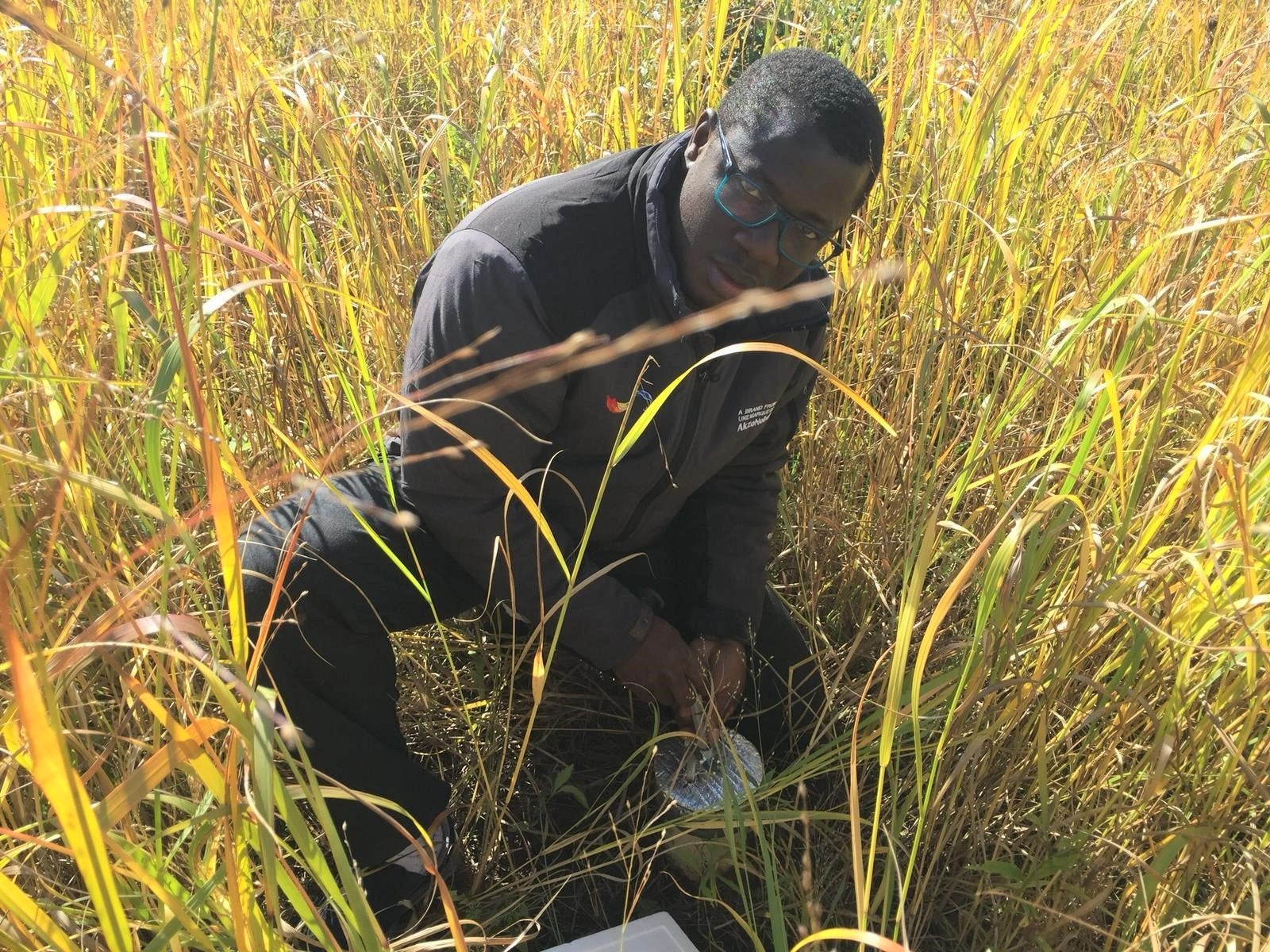Harnessing the power of plants to fight climate change
This story was originally published in the online publication Humans of Waterloo, The Graduate Students
When most of us look at soil, we don’t see much more than dirt. But for SERS PhD student Augustine Osei, soil — and its connection to sustainable land use, energy production and greenhouse gas emission reduction — holds keys to mitigating the climate crisis.
Augustine’s journey to the world of soil science started at a young age. Born and raised on a cocoa farm in Ghana, he always had a “keen interest in farming.” He followed that passion to the University of Ghana where he completed a Bachelor of Science in Soil Science, followed by a master’s degree in the same field from the University of Saskatchewan. While he was eager to take the next step into a PhD program, he knew he needed to get his hands dirty first.
The power of sharing ideas

“All I knew was farming from Ghana,” Augustine says. “I wanted to get Canadian experience before coming back to the classroom so I could understand things in a more practical sense.”
After working for three years as an agronomist — an expert in the science of soil management and crop production — for Prairie North Co-op in Saskatchewan, he was ready to dive back into research.
Augustine had met SERS professor Maren Oelbermann during his master’s degree. Her Soil Ecosystem Dynamics Lab was the perfect fit for his interests.
“I knew the supervisor and her research area before even reading about the School of Environment, Resources and Sustainability,” Augustine says. “But once I was there, I realized how unique it is, in the sense that it’s a transdisciplinary program. You have students and professors from diverse backgrounds coming together.”
The experience of situating his research within a community of people who are working in related areas, but don’t necessarily have soil science knowledge, has helped him stay grounded in a shared goal of social and ecological sustainability.
“People want to know how your research is going to make a meaningful impact in their lives. And that’s the reason why we’re doing the research.”
Exploring solutions to the climate crisis
Climate change, driven by greenhouse gas emissions, is one of the toughest challenges facing humanity today. Around 80% of emissions are tied to energy consumption and land use. But Augustine says it’s not all bad news; these are two areas “we can manage” and his research responds directly to both.
He’s exploring the potential for renewable plant-based sources of energy, known as bioenergy, to reduce greenhouse gas emissions and promote sustainable land use. Up until now, bioenergy has mostly taken the form of ethanol or biodiesel, which is created by converting food crops, like corn and other vegetables, into energy.
The problem, says Augustine, is that “we can't use our food sources for energy. We’d be running ourselves into another sustainability problem, which is food security. The land that we use for agriculture would be used for energy. And then we’d need to convert more land for growing food with associated greenhouse gas emissions, which defeats the purpose of using bioenergy as a climate mitigation tool.”
As a solution to that problem, researchers are exploring how bioenergy plantations, such as perennial grasses and short-rotation woody crops — also called second-generation crops — can be used for energy production instead.
“We don't need farmland to grow these crops. We can grow them on marginal land that’s not profitable for growing food crops. That way, we can produce sustainable energy while rejuvenating marginal land. It’s a win-win-win scenario.”
Laying the groundwork for a green energy revolution

Before bioenergy from alternative crops can be a viable solution, researchers need to develop a better understanding of the environmental implications. Augustine’s work is helping answer that question.
“My study is seeing if these crops, in addition to maybe lowering greenhouse gas emissions, might also contribute to long-term carbon storage.”
Over the last three years, he’s been conducting fieldwork at the University of Guelph Biomass Research site in Guelph, Ontario. There, he’s studying greenhouse gas emissions during growing and non-growing seasons and using spectroscopy techniques to measure carbon sequestration — how much carbon is stored in the soil. Ideally, the carbon stays in the soil for a long time, minimizing the amount that’s released into the atmosphere.
The results of Augustine’s study will help decision makers understand the role bioenergy plantations can play in reducing greenhouse gas emissions and tackling the climate crisis.